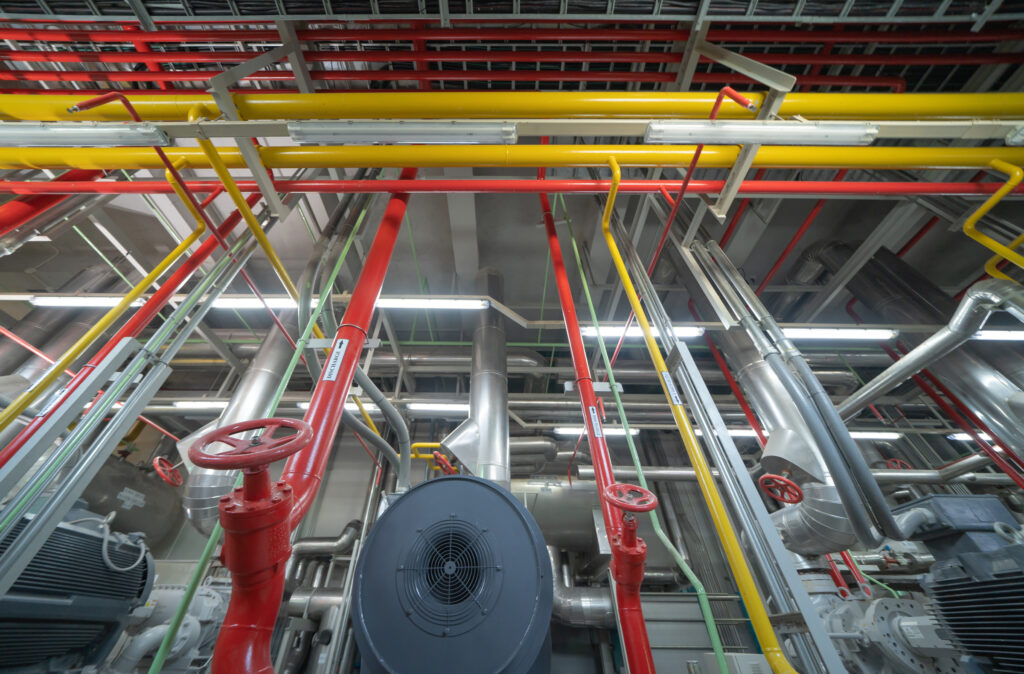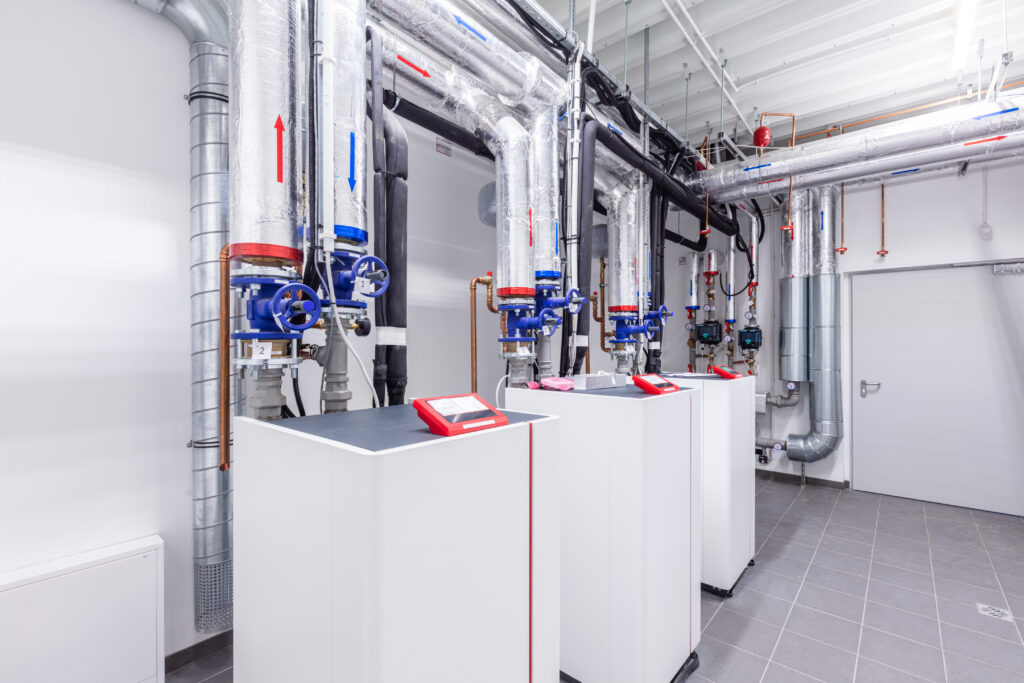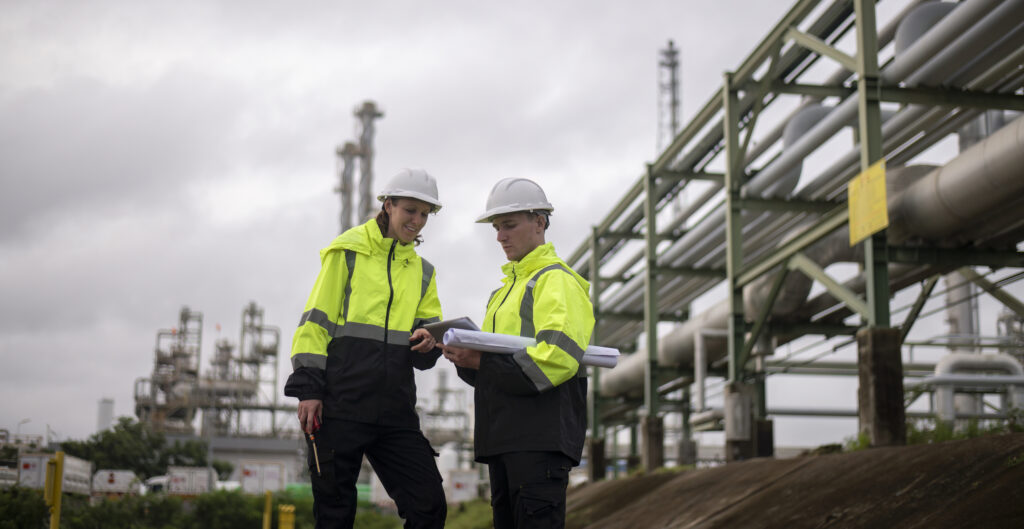Heat and cold grids with TES
Thermal Grids with TES (Thermal Energy Storage)
The heating and cooling networks with thermal energy storage (TES) represent a key solution to improve energy efficiency in urban and industrial environments. These infrastructures allow for the centralized distribution of thermal energy for heating and cooling, optimizing the use of renewable sources and reducing dependence on fossil fuels. Thanks to the incorporation of thermal energy storage systems, these networks can better manage demand, reduce consumption peaks, and provide greater stability to the energy system.
What are Heating and Cooling Networks and How Do They Work?
The district heating and cooling networks (DHC) are centralized systems that provide thermal energy for heating and cooling to multiple users through a pipe infrastructure. These networks can operate with different heat sources, including biomass, geothermal energy, thermal solar energy, industrial waste, and renewable electricity. The integration with thermal energy storage systems (TES) allows heat generation during low demand periods to be stored for later use, improving the flexibility and efficiency of the system.

Concept and Operating Principles
The operation of a heating and cooling network with TES is based on the following principles:
Thermal energy generation: Heat is produced in a central plant using renewable energy, cogeneration, or recovery of residual heat from industrial processes.
Distribution through a network of pipes: Thermal energy is transported in the form of hot water, steam, or heat transfer fluids to end consumers. In the case of cooling networks, cooled water is distributed.
Use in buildings or industrial processes: Heat and cold are used in heating systems, cooling, and industrial thermal processes, reducing the need for boilers and individual equipment in each installation.
Thermal energy storage (TES): It is used to absorb excess thermal energy during low demand periods and release it when necessary, improving system stability.
This model allows for better utilization of intermittent renewable energies, reduces demand peaks, and decreases fossil fuel consumption.
Differences between Conventional Networks and Thermal Networks with TES
Traditional heating and cooling networks rely on real-time generation, which limits their flexibility and efficiency. In contrast, the incorporation of thermal energy storage (TES) introduces several key advantages:
Flexibility: Conventional networks are limited by the instant demand for heat or cold, meaning that production must constantly adjust to consumption. In contrast, networks with TES can store excess thermal energy and use it when needed, improving demand management.
Integration with renewable energies: Traditional networks struggle to take advantage of renewable energy surpluses due to their reliance on real-time production. With TES, heat or cold generated from renewable sources is stored for later use, maximizing the system’s efficiency.
Energy efficiency: In conventional systems, a significant portion of the generated heat may be wasted if not consumed immediately. Heating or cooling networks with TES optimize thermal energy use, minimizing losses and improving the overall system performance.
Operational costs: Networks without thermal storage often face high energy consumption peaks, increasing costs associated with heat and cold production. Thanks to TES, these peaks can be reduced by storing energy during low demand periods and releasing it during peak hours, thus reducing operational costs.
System stability: Conventional systems rely entirely on real-time generation, making them vulnerable to fluctuations in energy availability. Networks with TES offer greater stability, as they can balance the supply and demand for thermal energy, ensuring a more reliable and consistent supply.
Key Components: Thermal Energy Generation, Distribution, and Consumption
For proper functioning, a heating and cooling network with TES requires several key components:
1. Thermal Energy Generation
Heat and cold production can be carried out using various sources:
Renewable energies: Solar thermal, geothermal, biomass.
Recovery of residual heat: Industries, cogeneration plants.
Renewable electricity: Use of heat pumps or electric resistors to heat thermal storage.
2. Thermal Energy Storage (TES)
Thermal storage is key to optimizing the system and can be implemented using:
Sensible storage: Hot water tanks, molten salts.
Latent storage: Phase change materials (PCM).
Thermochemical storage: Reversible chemical reactions with high energy density.
3. Distribution Network
High-efficiency thermal pipes: Minimize heat and cold losses.
Pumps and control systems: Regulate pressure and flow of heat transfer fluids.
4. Consumption by End Users
Residential and commercial buildings: Heating, hot water, and cooling.
Industry: Thermal processes, climate control for large facilities.
Urban infrastructures: Hospitals, universities, airports.
Key Technologies in Heat and Cold Grid with TES
The heating and cooling networks with thermal energy storage (TES) use various technologies to optimize the management of thermal energy and improve the system’s efficiency. The main solutions include:
Sensible Storage: Based on the use of materials such as water, molten salts, and refractory solids, it allows the storage and release of heat without phase changes.
Latent Storage: Uses phase change materials (PCM) that absorb and release large amounts of thermal energy during their transition between solid and liquid states.
Thermochemical Storage: Based on reversible chemical reactions that allow heat storage with an energy density higher than other technologies.
Each of these technologies presents specific advantages and challenges depending on the application and the type of thermal network in which they are implemented. To learn more details about thermal storage, its operation, and applications, check out our specialized article: Thermal Energy Storage.

Advantages of Thermal Grids with TES over Other Technologies
The heating and cooling networks with thermal energy storage (TES) represent an advanced and efficient alternative to conventional heating and air conditioning systems. Their ability to store and manage heat and cold allows for optimizing energy consumption, improving renewable energy integration, and reducing carbon emissions in key sectors such as industry and urban environments.
Higher Energy Efficiency and Reduced Losses
One of the main advantages of thermal networks with TES is their ability to increase energy efficiency, minimizing heat and cold losses in the system. In traditional systems, heat or cold must be generated in real-time and distributed immediately to consumption points. This process leads to significant energy losses due to thermal transmission over long distances and the need to oversize production to cover demand peaks.
With the use of thermal energy storage, strategies such as the following can be implemented:
Optimization of thermal generation: TES allows decoupling production from consumption by storing excess energy during low-demand periods and releasing it when needed.
Reduction of losses in distribution: Energy Storage systems can be strategically placed in the network, reducing the need to transport large volumes of thermal energy over long distances.
Greater stability in supply: With thermal reserves, fluctuations in system temperature are avoided, improving thermal comfort in buildings and industrial facilities.
Integration with Renewable Energy and Decarbonization
Heating and cooling networks with TES play a key role in the transition to a more sustainable energy model. Their integration with renewable energy sources such as solar thermal energy, biomass, geothermal, and efficient cogeneration helps reduce dependence on fossil fuels and advance the decarbonization of industry and urban environments.
Some of the ways TES contributes to this process include:
Utilization of renewable surpluses: When there is an excess of renewable energy generation (e.g., on sunny days with high solar thermal production), TES stores this energy for use when demand requires it.
Replacement of fossil fuels: In many applications, heating and cooling networks have traditionally relied on gas or coal boilers. With TES and renewables, the use of these fuels can be reduced or eliminated.
Reduction of CO₂ emissions: By utilizing renewable energy stored in thermal systems, the consumption of non-renewable energy is decreased, contributing to a reduction in the carbon footprint in cities and industries.
Flexibility and Demand Management in Urban and Industrial Systems
Another key advantage of thermal networks with TES is their ability to improve demand management and provide greater flexibility in both urban and industrial settings. This translates into:
Reduction of demand peaks: Thermal storage allows energy generated during low-demand periods to be used during peak consumption times, avoiding overloads on the energy infrastructure.
Adaptability to different heat and cold sources: These networks can integrate residual heat from industrial processes, solar thermal energy, or heat pumps, enabling them to adjust to the specific needs of each application.
Greater resilience of the energy system: With thermal reserves, the systems are less vulnerable to fluctuations in energy supply and can continue to operate in case of interruptions or failures in the electrical grid.
Real-World Applications of Heat and Cold Grids with TES

Heating and cooling networks with thermal energy storage are already being implemented in multiple sectors with successful results. From urban districts to industrial facilities, these solutions have proven their ability to improve energy efficiency, reduce costs, and minimize environmental impact.
Urban Districts with Thermal Networks in Europe
In various European cities, heating and cooling networks with TES have optimized energy consumption and reduced pollutant emissions. Notable examples include:
Copenhagen (Denmark): Its urban heating network covers more than 90% of the city’s heat demand and is largely supplied by renewable sources and thermal storage.
Paris (France): It has one of the largest cooling networks in Europe, based on thermal storage with chilled water and powered by renewable sources.
Helsinki (Finland): It has integrated heat storage in underground caverns, allowing for thermal energy supply in winter from heat accumulated in summer.
These projects have shown that combining thermal networks with TES allows for a more sustainable and efficient energy model in cities.
Implementation in Hospitals, Universities, and Large Buildings
Hospitals, universities, and other large complexes require stable and efficient thermal supply. The integration of thermal storage in their heating and cooling networks has enabled:
Ensuring energy stability: Hospitals, in particular, need an uninterrupted heating and cooling supply, and TES allows them to maintain service even under high demand conditions.
Optimizing consumption in university campuses: Universities such as Stanford have implemented thermal storage to improve the efficiency of their HVAC systems.
Reducing operational costs in large buildings: Shopping centers and office buildings use thermal storage to avoid intensive use of air conditioning during peak hours, reducing their energy bills.
Use in Industry for Thermal Energy Recovery and Management
Industries generate large amounts of waste heat that, in many cases, are lost without being harnessed. With the integration of thermal batteries and heat networks with TES, it is possible to:
Recover heat from industrial processes: Sectors such as steelmaking, chemicals, and food can reuse waste heat to power their own thermal processes.
Store renewable energy for high-temperature processes: Some industries have begun to use TES to store surplus renewable energy and use it in their operations.
Reduce dependence on fossil fuels: Thanks to the combination of renewables and thermal storage, many industries can minimize their consumption of gas and other polluting fuels.
These applications demonstrate the enormous potential of heating and cooling networks with thermal energy storage to improve energy efficiency and accelerate the transition to a more sustainable energy model.
Challenges and Future Perspectives of Heat and Cold Grids with TES

Despite their multiple benefits, the implementation of heating and cooling networks with thermal energy storage (TES) faces several challenges that must be overcome to achieve wider adoption and efficiency. From economic and infrastructure barriers to the development of new technologies, the future of these networks will depend on the ability of industry and governments to drive innovation and investment in these systems.
Infrastructure Expansion and Implementation Costs
One of the biggest challenges in adopting thermal networks with TES is the need for appropriate infrastructure. Implementing these networks in urban or industrial environments requires a significant initial investment in:
Construction of thermal distribution networks: This requires the installation of pipes and thermal exchange stations to transport and manage thermal energy.
Integration with renewable energy sources: To maximize efficiency and sustainability, these networks must be connected to biomass, geothermal, or solar thermal plants, which requires advanced energy planning.
Large-capacity thermal storage: The design and construction of scalable thermal batteries remains a technical and economic challenge in many regions.
Despite these challenges, the expansion of thermal networks with TES has proven to be economically viable in the long term. To accelerate the adoption of these networks, it is crucial for governments and the private sector to promote innovative financing models, such as public-private partnerships (PPP) and shared investment schemes with long-term benefits.
Development of New Materials for Greater Storage
The performance of thermal storage systems is directly related to the materials used to store and release thermal energy efficiently. Currently, TES systems primarily use:
Molten salts in high-temperature applications, such as concentrated solar power.
Water and thermal rocks in sensible heat storage for low and medium temperatures.
Phase change materials (PCMs), which absorb and release heat during their transition between solid and liquid states.
However, to improve the efficiency of thermal networks with TES, new materials with advanced characteristics are needed, such as:
Higher energy density: Materials capable of storing more heat per unit of volume, which allows for smaller TES systems.
Better thermal and chemical stability: To ensure heat storage and discharge cycles without degradation over time.
Enhanced phase change materials: Research into nanomaterials and hybrid compounds seeks to increase thermal conductivity and heat exchange speed.
Advanced thermochemical systems: Emerging technologies like reversible chemical reactions allow for more efficient thermal energy storage without losses from dissipation.
Advancing these materials will be key to making heating and cooling networks with TES systems more compact, efficient, and economically accessible.
Digitalization and Smart Control for System Optimization
Digitalization and automation are playing a key role in the evolution of thermal networks with TES. The implementation of artificial intelligence (AI) and Big Data technologies enables:
Optimizing the charge and discharge of TES systems based on real demand and weather conditions.
Predicting energy consumption peaks through analysis of historical data and predictive models.
Improving operational efficiency by adjusting thermal flow in real-time to minimize losses and maximize the use of renewable energy.
Some key technological solutions include:
IoT sensors in thermal networks: They allow real-time monitoring of temperature, flow, and system efficiency.
AI-based energy management platforms: They analyze large volumes of data to optimize heat and cold storage and distribution.
Demand response systems: They adjust thermal supply based on fluctuations in the electrical grid, enabling more efficient integration with renewable energies.
The future of heating and cooling networks with energy storage will depend largely on the ability to digitalize and implement smart control. With the implementation of these technologies, it is possible to improve energy efficiency, reduce costs, and ensure optimal operation in real-time.
Renewable
Power Onwards
Engineers with over 20 years of experience
